The Roofers Glossary – Have you ever wondered what parts of a roof are called? Roofing Terminology used by our local Portland Roofers and Most Roofing Companies from around the world.
A

Algae – A rooftop fungus that can leave dark stains on the roofing material. Some composition shingles now come with a copper granule that helps to prevent algae growth.
ARMA – The organization that represents roofing manufactures: Asphalt Roofing Manufacturer’s Association.
Alligatoring – During the aging process in asphalt, oxidations brought on by solar radiation produces a pattern of cracks which resemble the hide of an alligator. You can see this in both flat roofing and slope roofing products.
Architectural Shingles – A asphalt composition shingle that has at least two layers of thickness to provide a shake like look. These asphalt based materials tend to look heavier and more random on the roof.
Asphalt – The residue left after the distillation of petroleum used as a waterproofing agent. The most expensive and most important part of a composition roofing shingle. Quality and the amount used often determine the life of a roof.
ASTM – The American Society for Testing and Materials. They set standards for many products including roofing.
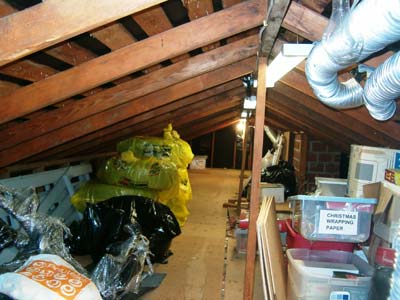 Attic – The area above the ceiling and under the roof deck that is generally not consider living or finished space. Attic spaces affect the way moisture and heat impact the roof.
Attic – The area above the ceiling and under the roof deck that is generally not consider living or finished space. Attic spaces affect the way moisture and heat impact the roof.
B
Back Surfacing – The fine mineral material applied to the back side of composition shingles to keep them from sticking together.
Baffles – Generally made of treated cardboard or plastic, these sheets are installed on top of the 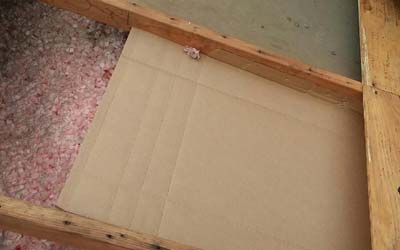 insulation to keep it from blocking the air intake or to provide an airflow passage in a house’s vaulted cavity or by soffit vents. Ventilation is an important part of any composition roofing system.
insulation to keep it from blocking the air intake or to provide an airflow passage in a house’s vaulted cavity or by soffit vents. Ventilation is an important part of any composition roofing system.
Base Flashing – The flashing that is over the roofing material to allow water to run onto the roof. These roof flashings are often visible on the front of homes that have dormer s.
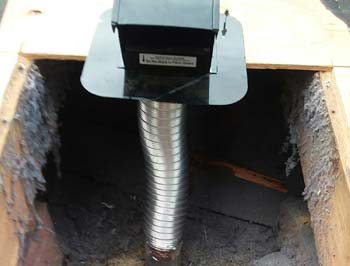 Bath Vent – A vent that is installed specifically for a fan located in the bathroom or laundry room to remove moisture away the home’s interior. If incorrectly ducted or nonexistent, poor roof exhaust vents for both bathrooms, laundry rooms, or kitchens often promotes the growth of mold in the attic spaces along with additional problems.
Bath Vent – A vent that is installed specifically for a fan located in the bathroom or laundry room to remove moisture away the home’s interior. If incorrectly ducted or nonexistent, poor roof exhaust vents for both bathrooms, laundry rooms, or kitchens often promotes the growth of mold in the attic spaces along with additional problems.
Blister – A bubble or raised spot that is evident on the surface of the roofing material. These spots are mainly caused by the expansion of trapped air and or moisture. They can occur on both flat on pitched roofing systems.
Blow-Offs – When shingles (composition or wood) are exposed to high winds and are broken or torn from the roofing system. The newer composition shingles have improved wind resistance with better sealants and structure.
Bond Breaker – Generally tape applied between to materials to prevent them form sticking or sealing together
C
Caulking – Using caulk to seal a joint, material, or exposed product. Caulking comes in many types of materials and quality grades.
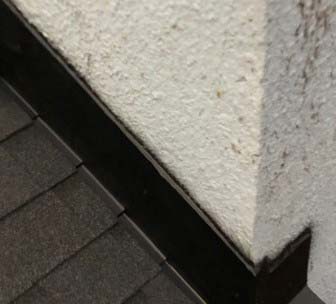 Chemical Resistance – A materials ability to resist degrading when it comes in contact with certain chemicals.
Chemical Resistance – A materials ability to resist degrading when it comes in contact with certain chemicals.
Class “A” – Indicates the roofing materials ability to withstand exposure to fire originating from sources outside of the building. This is the highest fire-resistance rating for roofing. Most modern day roofing systems are available with a Class A rating.
Closed Cut Valley – An installation method of installing a composition valley using the shingles themselves as the exposed part of the valley.
Condensation – When water changes from a vapor to a li q uid , generally occurs when warm moist air come in contact with a cold surface.
Counter-Flashing – A metal flashings that is installed over roof-top based flashings, such as when a brick chimney counter-flashings is installed to shed water over the roof to chimney flashings.
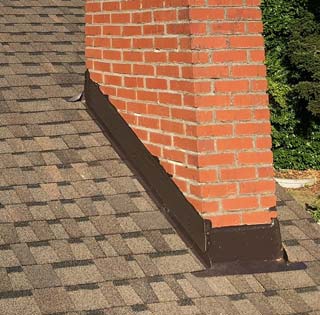 Course – A single layer of building material, such as a row of composition roofing shingles or shake shingles.
Course – A single layer of building material, such as a row of composition roofing shingles or shake shingles.
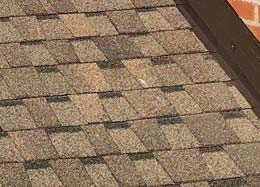
Cricket – A sloped or tapered construction detail that encourages the drainage of water behind an obstacle such as a skylight or a chimney.
Cupola – A decorative detail at the peak of a roof that can sometimes be functional as a source of ventilation.
Cupping – When composition shingles are improperly installed over an existing roof, they may curl or cup.
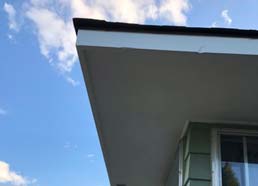
Curb – A small wall or box that is built above the level of the roof deck that provides a means to flashing such items as HVAC equipment, or skylights.
D
Deck – The bottom surface to which a roof system is applied to. These can consist of wood boards, plywood, OSB, metal, and even concrete.
Dead Valley – An area where to planes meet and create a non-sloped section of the roof. These generally require a flat roofing material tie into the sloped roofing material.
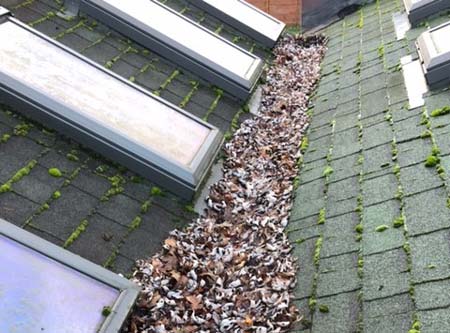
Dimensional Composition Shingle – Consists of a standard asphalt composition shingle that is textured by lamination to produce a heavier or three-dimensional effect.
Dormer – A structure on a sloping roof that protrudes out. These can be both decorative or actual living space.
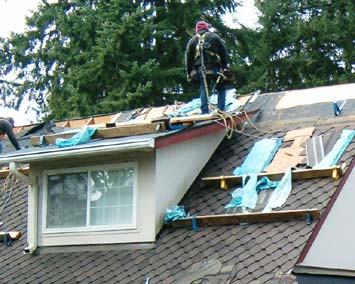
Downspout – The metal or vinyl pipe used to drain the water off the water collecting gutters.
Drain – As in roofing, it generally refers to a flat roof device used to carry water off the roof.
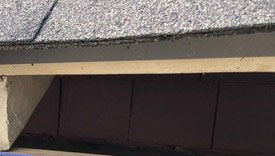
Drip Edge – A “L” shaped metal flashing installed at the gutter edge of a roof that is designed to prevent water from running back or underneath an overhang. These can be make of galvanized steel or aluminum and come in many colors to match the roof or gutters.
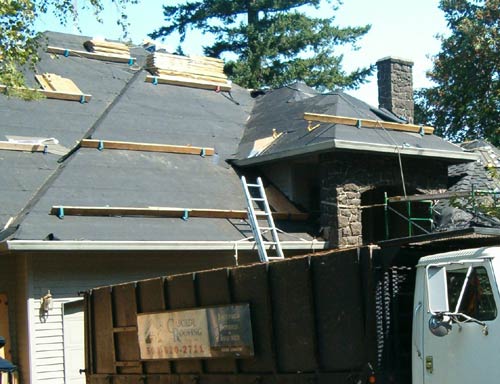
Dry-In – The job of installing roof felt under layment in steep-slope roofing or a water tight base sheet in low-slope roofing system making the roof watertight.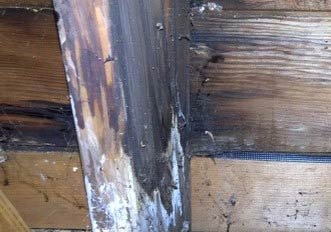
Dry Rot – Rot caused to wood by certain fungi. It can be caused from roof leaks, condensation build-up, or from other problems that go unattended. Dry rot can spread and damage any other lumber touching the affected area.
E
Eave – a roof edge that extends out past the exterior wall.
Edge Venting – A product designed to be installed along the roof edge as the intake in a ventilation system.
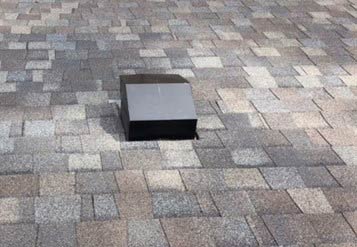 Exhaust Vent – A venting device that is installed near the peak or higher portions of the roof, such as the ridge. There are many types of exhaust vents such solar or power vents, ridge vents, gable vents and so on.
Exhaust Vent – A venting device that is installed near the peak or higher portions of the roof, such as the ridge. There are many types of exhaust vents such solar or power vents, ridge vents, gable vents and so on.
Exposure -This applies to both shingle and membrane roofing – it is the portion of material that is not overlapped by the succeeding ply or course.
Eyebrow – Generally a small roof projection which protrudes from a wall, generally located above windows.
F
Fascia – A cover board at the edge or eaves of a sloping or flat roof which is placed in a vertical position to protect the edge of the roof system. These may be left exposed or covered with gutters.
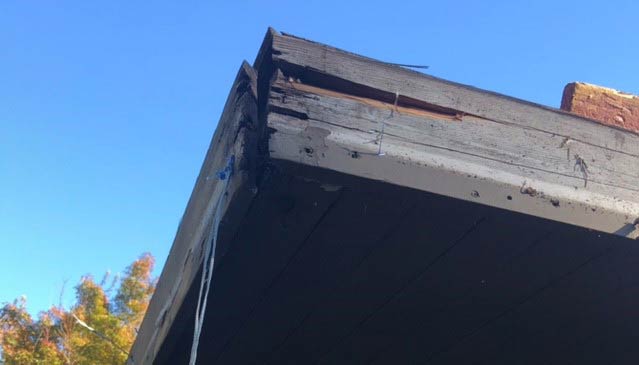
Fasteners – A term that refers to a wide variety of nails, staples and screws used to mechanically secure various components for a house or building structure. Roofing fasteners can vary from aluminum, stainless steel, galvanized and even copper.
Felt – Generally consisting of a mat and impregnated with asphalt . It is available in many weights and configurations. Used in steep-slope roofing, it may be an organic, inorganic, or hybrid com position.
Field Of The Roof – This refers to the central part of the roof not including the edges.
Flashing – A connecting device that seals joints at walls, drains, etc… where the roofing membrane is interrupted or terminated.
Flashing Collar – A component used to seal soil pipe vents, stacks, or other roof top penetrations.
Flashing (Step) – Individual pieces of metal used in conjunction with an over-lapping pattern around dormers, skylights, chimneys .
Fully Adhered – When the roofing membrane is completely attached to the surface beneath it.
G
Gable – The end of a house or building where the roof is sloped.
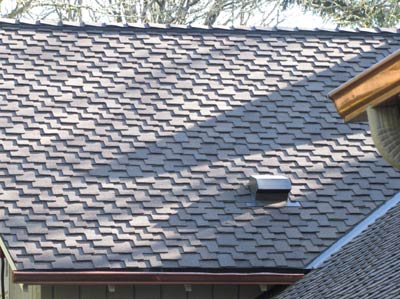
Galvanize – A coating of zinc on metal to prevent the metal from rusting.
Gauge – The thickness of sheet metal or wire.
Granules – Mineral particles which are embedded in the asphalt coating of roofing shingles or other types of asphalt roofing products.
Gutter – A trough attached at the eaves of the roof to collect and carry rainwater from the roof to the down through the downspouts. Gutters come in many different sizes and shapes along with varying types of materials.
H
Heat Seaming – The fusing of separate sections or runs of roofing material using hot air or an open flame torch. Generally this type of roofing application is used for low to no slope roofs.
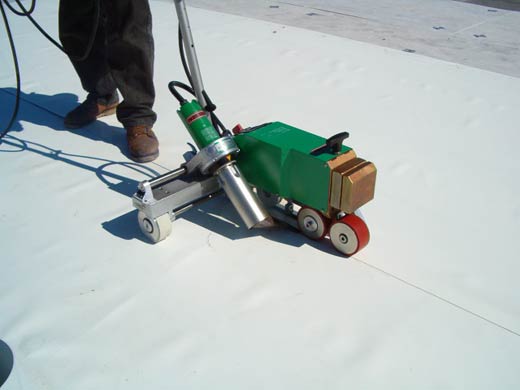
Hem – By folding the metal back on itself, a hem is created for strength and safety reasons.
Hip – When two sloping roof planes intersect, they are referred to as a hip.
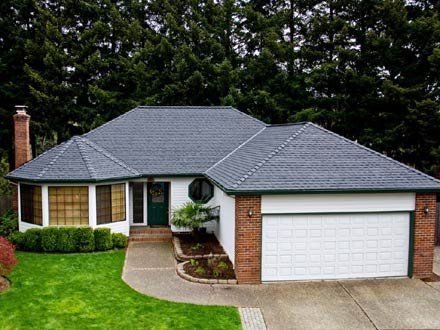
High Nailing – When nails are installed above the manufacturer’s specified nail location. This is also true for staples.
Ice Dam – An ice dam is formed when a warm surface transitions to a cold surface, generally along the overhang of a house. The ice builds up as a result of the snow or ice melting on the roof area over the warmer sections of the roof and then refreezing when it runs down and comes in contact with the cooler overhangs. Ice Dams are a serious problem in many parts of the country.
Ice and Water Shield – Our experienced roofers generally a rolled self-adhering product made of asphalt polymers used as an underlayment to prevent problems associated with ice-dams and low slope issues on roofs.
Impact Resistance – A roof’s ability to withstand the impact from faIling objects such as hail.
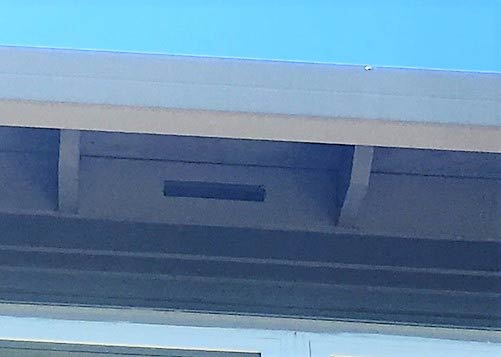 Intake Ventilation – The piece of a ventilation system used to draw fresh air into an attic or structure generally located towards the gutter edge of a roof.
Intake Ventilation – The piece of a ventilation system used to draw fresh air into an attic or structure generally located towards the gutter edge of a roof.
J
Joist – A horizontally placed beam set on edge to give support to a floor or a ceiling structure.
L
Lap – To extend the working roofing material partially over another.
Lead Vent – Used for roof flashings when a malleable base or rust resistant material is required.
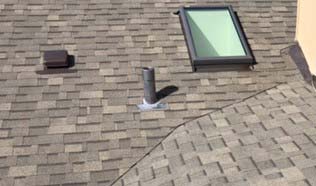
Live Load – The additional weight provided by snow or water or other items or conditions that are not permanent, on a roof structure.
M
Mansard Roof – A roof style which rises by planes from all four sides of a home or building.
Mastic – A bitumen used for flashings or patch work which will remain elastic and pliable. Usually applied with a trowel and often associated with built-up roofing.
Membrane – A general term relating to a variety of roofing sheets used to form roofing systems.
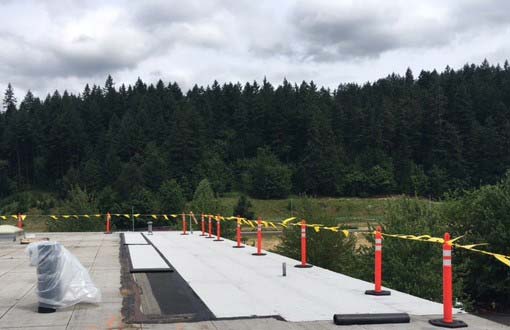
MIL Thickness – Measurement used to determine thickness of the roofing material.
J.I Mildew-A coating of organic materials caused by fungi.
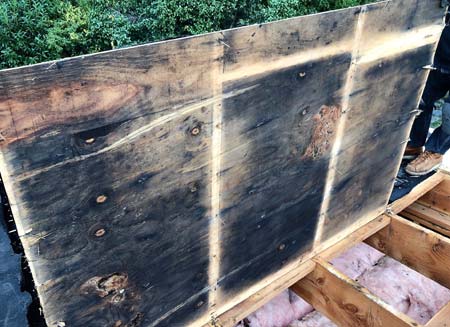
Mineral Surfaced – Granules embedded in the surface of heavy asphalt felt.
Modified Bitumen – This is a special process by adding SBS type rubber or APP to Bitumen to improve its roofing performance.
Moisture Relief Vent – A vent installed through the roofing membrane to relieve moisture vapor pressure that is trapped within the roofing system.
N
Nailer – A piece of lumber secured to non-nailable deck and walls which provide an appropriate backing for fasteners or bolts to attached to.
Nail-Guide Line – A line painted on composition shingles to provide the correct area for fastener placement.
Nail-Pop – When a fastener is not fully driven or has backed partially out of the decking and sits up off the roof deck, you have nail-pop. This also applies to roofing staples.
Nesting – When roofers install a second layer of composition shingles aligning the courses up with the original pattern to avoid the shingles cupping. Installing a composition roof over another roof is not recommended by the manufactures.
Net Free Vent Area – The amount of area that permits unrestricted airflow. There are several different national code ratios that areused to determine the correct amount.
NRCA – National Roofing contractors Association.
O
Open Valley – A valley where both sides of the roof are trimmed back from the centerline to expose the valley flashing material. Generally, a metal valley liner (“w” metal) is consider to be the longest lasting.
Organic Felt – An asphalt roofing base material manufactured from cellulose fibers that is being replaced by felts made with fiberglass.
Organic Shingle – An asphalt composite shingle reinforced with organic material manufactured from cellulose fibers that is being replaced by fiberglass composite shingles. Most composition shingles on the West Coast are composed of fiberglass, not organic.
OSB – Oriented Strand Board is a decking made from wood chips and lamination glues. These are considered standard building materials, but for roof decks, plywood is preferred.
Over-Driven – When fasteners are driven through the roofing material with excessive force that results in reduced holding power.
Over-Exposed – Install shingles courses higher than the manufacture intended leaving the shingles incorrectly installed. This will often lead to blow off and or leaks.
Overhang – That part of the roof structure that extends horizontally beyond the vertical plane of the exterior walls of a home or building.
P
Parapet Wall – A low wall that surrounds the perimeter of a flat roof deck.
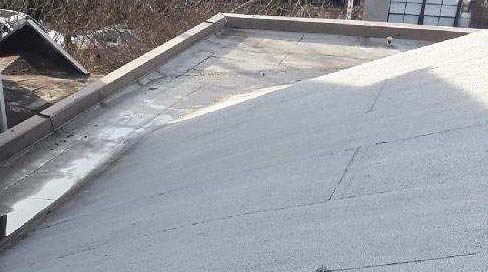
Penetration – Any object that pierces the surface of the roof. Pipe Boot – A flashing piece used to seal around a circular pipe.
Pitch – A term used to determine the slope of the steepness of a roof.
Plywood – Panels made from wood by gluing thin sheets of wood together. When installing a roof deck, plywood is considered to be a better product than the less expensive 05B.
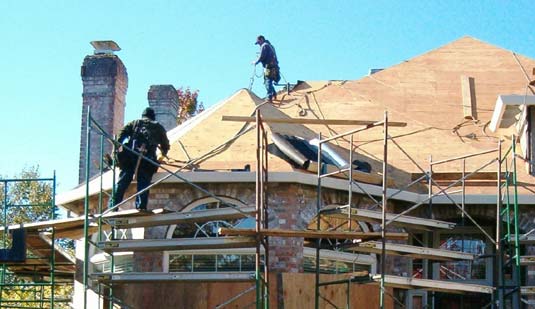
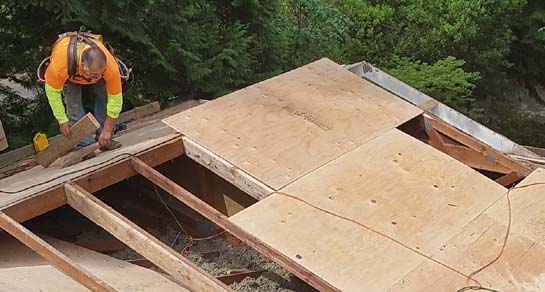
Pointing – Brick chimneys, etc… are created using bricks and mortar. The process of finishing those joints is called pointing.
Ponding – The accumulation of water at low lying areas of the roof. You will ponding water generally on flat roofs that haves sags or we poorly built with insufficient slope.

Power Vents – Electrically or solar powered fans used to move air from attics and structures. These can be the most effective when trying to remove built -up heat from an attic space.
Primer – A material applied to a surface for the purpose of creating a more secure bonding surface.
PVC – Polyvinyl Chloride – what is available as a single ply roofing material.
R
R-Value -The measure of a material’s resistance to heat flow. The higher the number (R-value) the more it insulates.
Rafter – The structural member extending from the downslope perimeter of a roof to the ridge or hip.
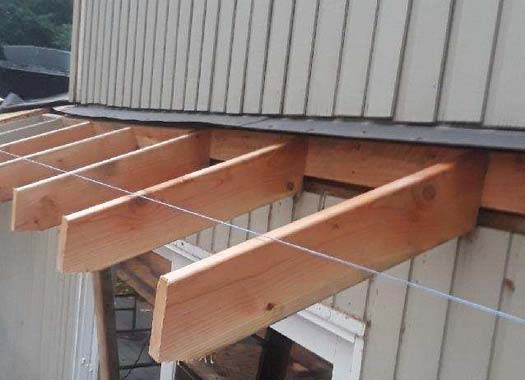
Rake – the angle of slope of a roof rafter.
Reglet – A horizontal slot formed or cut in a parapet or other masonry wall which the top edge of the counterflashing can be inserted and anchored.
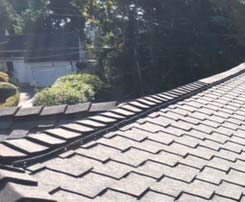 Ridge – The line where two places of roof intersect, forming the highest point on the roof that runs the entire length of the roof.
Ridge – The line where two places of roof intersect, forming the highest point on the roof that runs the entire length of the roof.
Ridge Cap – The roofing material that is applied over the ridge or hip of a roof. There are several types and looks available for installation on a pitched roof.
Ridge Vent – An exhaust vent component that is located at the ridge of a roof and works in conjunction with a starter or under eave soffit vent and is used to ventilate attics or structures.
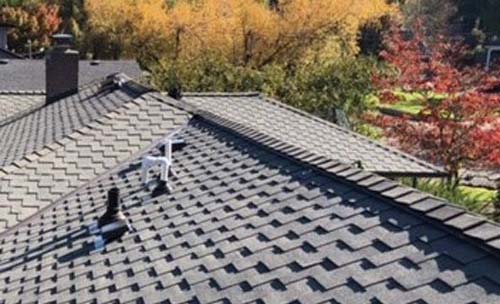
Roof – The assembly of components that forms the exterior weatherproof portion of a building or house.
Roof Deck – The component in a home or building construction which forms a platform on which the roofing is attached.
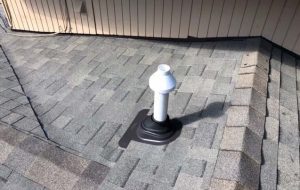
Roof Slope – The angle made by the roof surfaces and are expressed as the amount of vertical rise for every twelve inches of horizontal run.
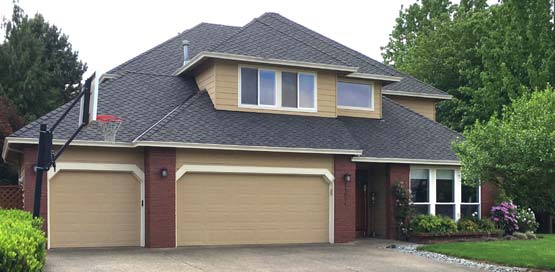
Roof System – A general term referring to the waterproof covering, roofing insulation, vapor barrier and roof deck along with other integral components.
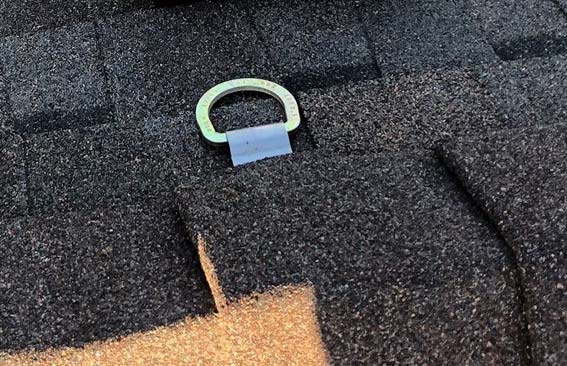
S
Saturated Felt – Felt that has been saturated with bitumen.
Scupper – An opening in a parapet wall for drainage of water on low slope and flat roofing.
Sealant – The generic term for materials used to seal joints against moisture and weather.
Shed Roof – A roof having only one slope or pitch, with only one set of rafters which fall from a higher to a lower wall.
Sheathing – Plywood or other sheet type material nailed to studding or 7 roofing rafters as the base for application of the roof covering.
Shingles – Composition shingles are individual units of material which are laid in a series of overlapping rows as a roof covering on pitched roofs.
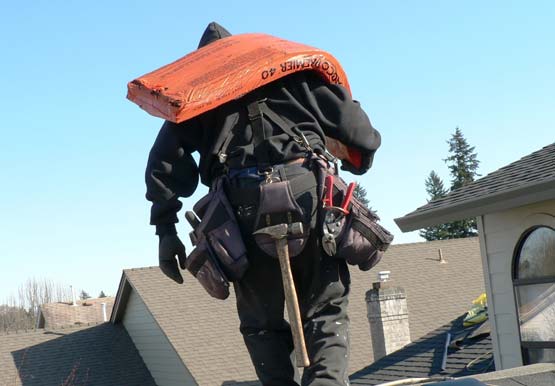
Single Ply – A term referring to a roof membrane composed of only one layer of material such as PVC, TPO or EPDM.
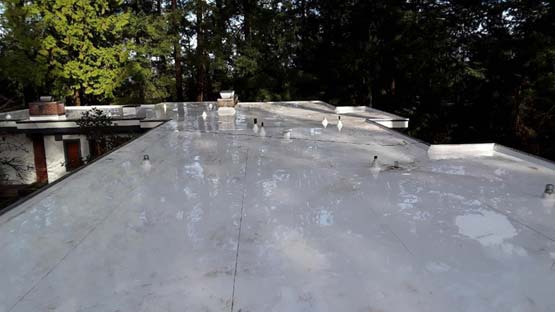
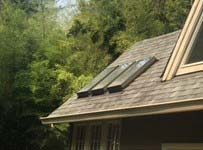
Skylight – A structure on a roof that is designed to admit light. These are available to install on both sloped and flat roofs.
Slate – A stratified stone cut relatively thin and installed on pitched roofs in a shingle like fashion.
Slope – The incline or pitch of a roof surface.
Soffit – The underside part of a buildings extending out from the plane of the building walls.
Snow Load – The load that is a result from snowfall.
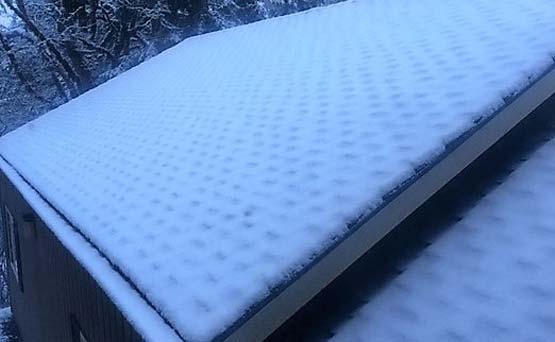
Specifications – Detailed written instructions which explain each phase of work to be done.
Square -A roofing term to indicate an amount of roof area equal to 100 square feet. A common ranch home may have a roof area of 3200 sq.f t., or 32 squares.
Stack – A vertical pipe projecting through a roof deck.
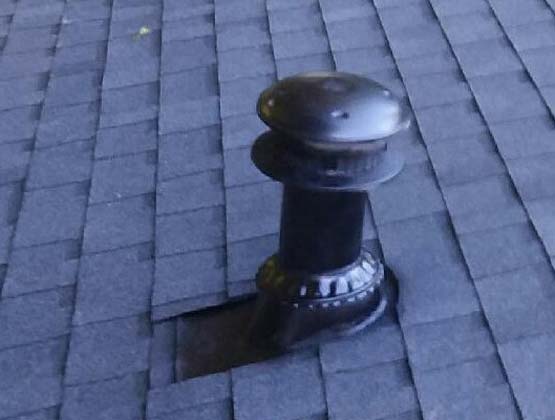
Starter Strips – Narrow strips of roofing that are applied at the beginning point of a roof.
Steep Slope Roofing – Generally all slopes with a pitch above 4/ 12.
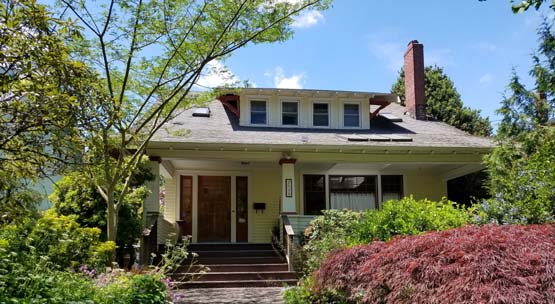
Styrene Butadiene Styrene (SBS) – The modifying agent used in SBS modified asphalt roofing materials that gives the material a rubber like quality.
T
Tear-Off – A term used to describe the complete removal of the roof membrane and insulation down to the roof deck. This is the pref erred method when installing a new roof.
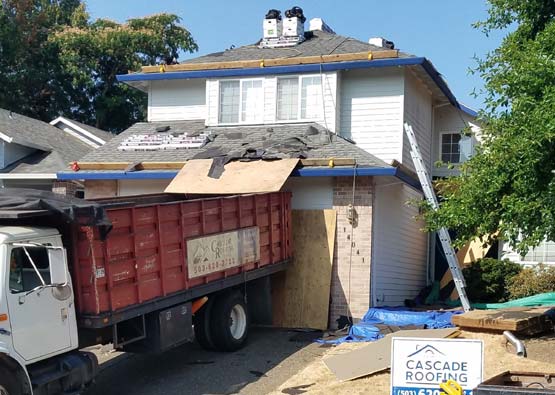
Telegraphing – When shingles are applied over an uneven surface beneath them and results in the top layer looing buckled or lumpy.
Thermal Shock – The stress caused by sudden ch anges in roof t emperatures.
Tie-In – A term used to describe the joining of a new roof to an old roof.
Torching – Applying a direct flame to a membrane for the purpose of melting the roofing material so that it will adhere to the substrate and or similar material.
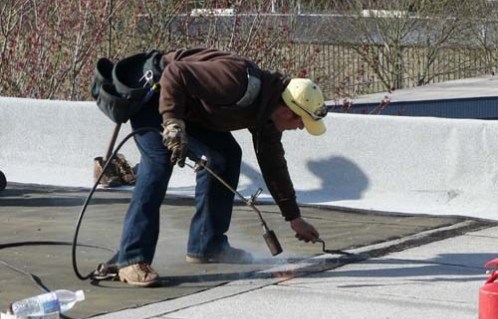
U
Under-driven – When a fastener is not fully driven flush to the shingle surface.
Underlayment – A material installed by roofing companies over the roof deck prior to the application of the primary roof covering .
V
Valley – An area on a roof where two inclined slopes of a roof meet.
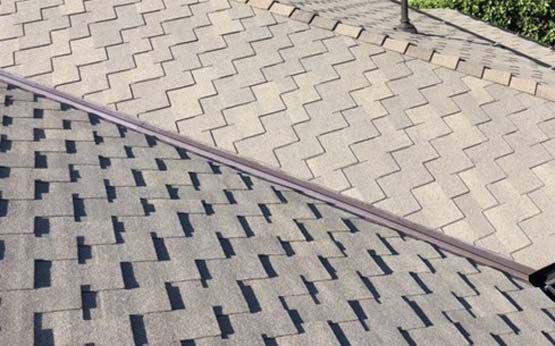
Vapor Retarder – A material used to restrict the passage of water vapor through a roofing system.
Vent – An opening or device used to perm it air or vapors to exit a structure.
Vent Pipe – A vertical pipe of relatively small dimensions which protrudes through the roof to provide for ventilation of gasses.
Venting – The process of installing roof vents in a structure to relieve vapor or heat build-up in the enclosed roof assembly area.
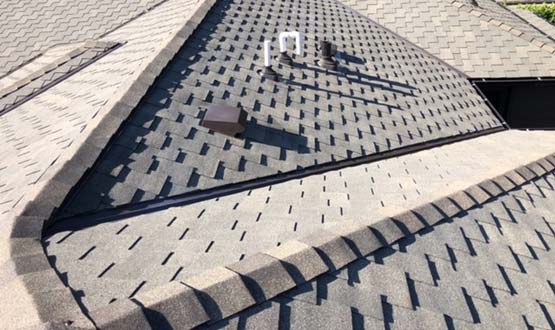
W
Waterproofing – The process where a building component is made to totally resist the passage of water and/or water vapor .
Weep Hole – Usually a small hole that allows for drainage of entrapped water.
Weld – The joining of components together by welding them together, by heat or solvents.
Wind Uplift – The upward force exerted by wind traveling across a roof.
Z
Zinc – A metallic element that is used in a wide variety of alloys including brass, bronze, and in galvanized iron and other metals. Zine is often used on roofs to prevent or kill moss.
And there you have it, the Roofers Glossary and Terminology from A to Z.

